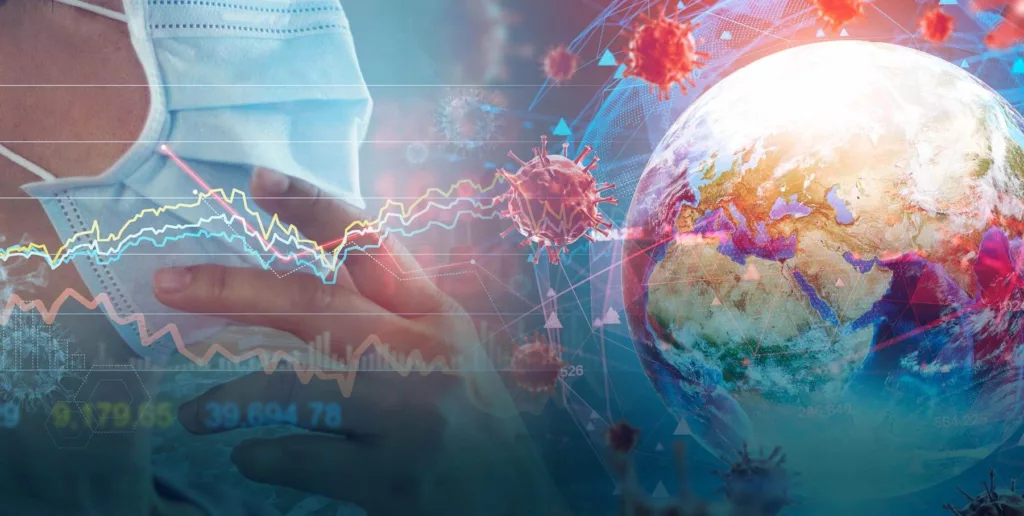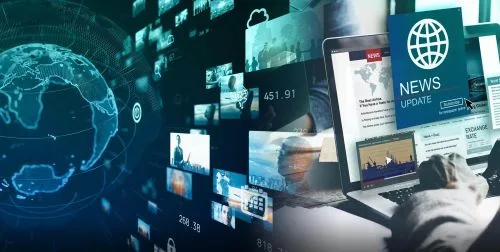As a senior security leader working during the recent pandemic, you know how difficult responding to the crisis was. And you aren’t alone in your evaluation.
When surveyed, 61% of American executives responded that they had been underprepared for the pandemic. They said they reacted to the crisis after the fact by building pandemic teams to interpret disease data and to direct corporate action. Their data sources were not transparent and senior security leaders were suddenly charged with being infectious disease specialists. Or they had to locate reliable data and expert analysis in a hurry.
Now that the crisis has subsided, you might ask, “Now what should I do?”
It’s simple. You can’t wait for the next crisis to plan your next response. Action now can give you a decided advantage next time. And, unfortunately, experts predict that there will be a next time, and it may be soon.

Lack of Preparation Now Can Handicap You Later
Ed Yong has been writing for many years about the “panic-neglect cycle” to explain two contradictory actions that occur in a crisis. He describes how people and companies tend to confront a crisis with everything they have – only to fail to plan for the next emergency. And in a recent article for The Atlantic, Yong warned that the U.S. is currently “zooming” through this cycle.
Without a looming threat, it’s so easy to ignore the warnings. When the next crisis emerges, however, some of your rivals will have prepared, giving them a tremendous competitive advantage. Companies that don’t prepare will have to build response teams from scratch – again.
Here are three reasons you can’t wait to prepare for biosecurity threats:
1. No One is Coming to Save You
As a senior security leader, it’s your responsibility to protect enterprise assets. We learned to our dismay during the pandemic that no one is coming to rescue companies or individuals. We’re on our own.
Your job includes protecting physical structures, assets and network capabilities, but it also means you are responsible for keeping your employees safe. They are the key to business continuity. Their well being is the number-one priority, and it is essential to the economic security of employees and the company.
If you fail to plan, however, you are exposing the company and its employees to a variety of hazards. Planning now will help protect your entire enterprise.
2. The Next Crisis Could Be Significantly Worse
In the summer of 2021, the Center for Global Development hosted an event to address global preparedness for future pandemics. Experts at this event warned that spillover events – instances of infectious diseases that spread from animals to humans – are increasingly frequent, and there is always the potential for deliberate release of harmful viruses or bacteria.
Unfortunately, we can expect the chances of pandemics to continue rising. Experts at this event predicted that within 25 years, the odds of another global pandemic are between 47% and 57%. COVID has turned out to have a low mortality rate, under 1% of those infected died from the disease. The next pandemic could easily kill a greater percentage of those infected, as has happened in the past with the 1918 flu and other outbreaks.
Pandemics, however, aren’t our only concern. We can expect other biosecurity threats to increase and accelerate because they are driven by climate change. biosecurity threats are affected by environmental factors like temperature, air quality, storms, fire and floods. A report from the McKinsey Global Institute warned, “We find that India could become one of the first places in the world to experience heat waves that cross the survivability limit for a healthy human being sitting in the shade.”
India may be the first place to cross the survivability limit, but it won’t be the last.
3. Early Action Can Make a Real Difference to Enterprise Security
After the 2003 outbreak of SARS in Singapore, a study of emergency care concluded: that “… defense against infectious disease threats [must become] a daily operational necessity rather than an unfamiliar contingency plan activated only during recognized events.”
That’s for an outbreak that killed fewer than 100 people. You can imagine what their recommendations would be for emergency rooms and global companies in a larger outbreak. You can’t rely on “unfamiliar contingency plans” that you only activate during recognized events. Advance preparations coupled with early warnings will allow you to provide the best response possible. Planning for biosecurity threats is becoming as important to companies as planning cybersecurity responses.
Prepare for the Next Emerging Biosecurity Threats with PHC Global
biosecurity threats are the new reality. Preparing now will allow you to make educated, low-regret decisions in time to provide the maximum amount of flexibility for your organization – if you can see those biosecurity threats coming. And you can help develop a company culture that anticipates future crises.
PHC Global can help you prepare with a software-as-a-service platform powered by artificial intelligence. PHC Global synthesizes large quantities of data to identify and surface the intelligence that matters most to you. You can access the intelligence using Pharos, our stand-alone platform or with an API that connects our data to your system.
In addition, PHC Global experts contextualize risks and help determine when a threat requires immediate action. Their expertise is available to you through alerts or through direct consultation.
Threats to your company are increasing, and managing biosecurity is a relatively new function for security personnel but is as important as cybersecurity. PHC Global can provide the intelligence you need to prepare for emerging biosecurity threats and take appropriate action. If you’d like to learn more about biosecurity and how PHC Global can help your company, view this short introductory video.



